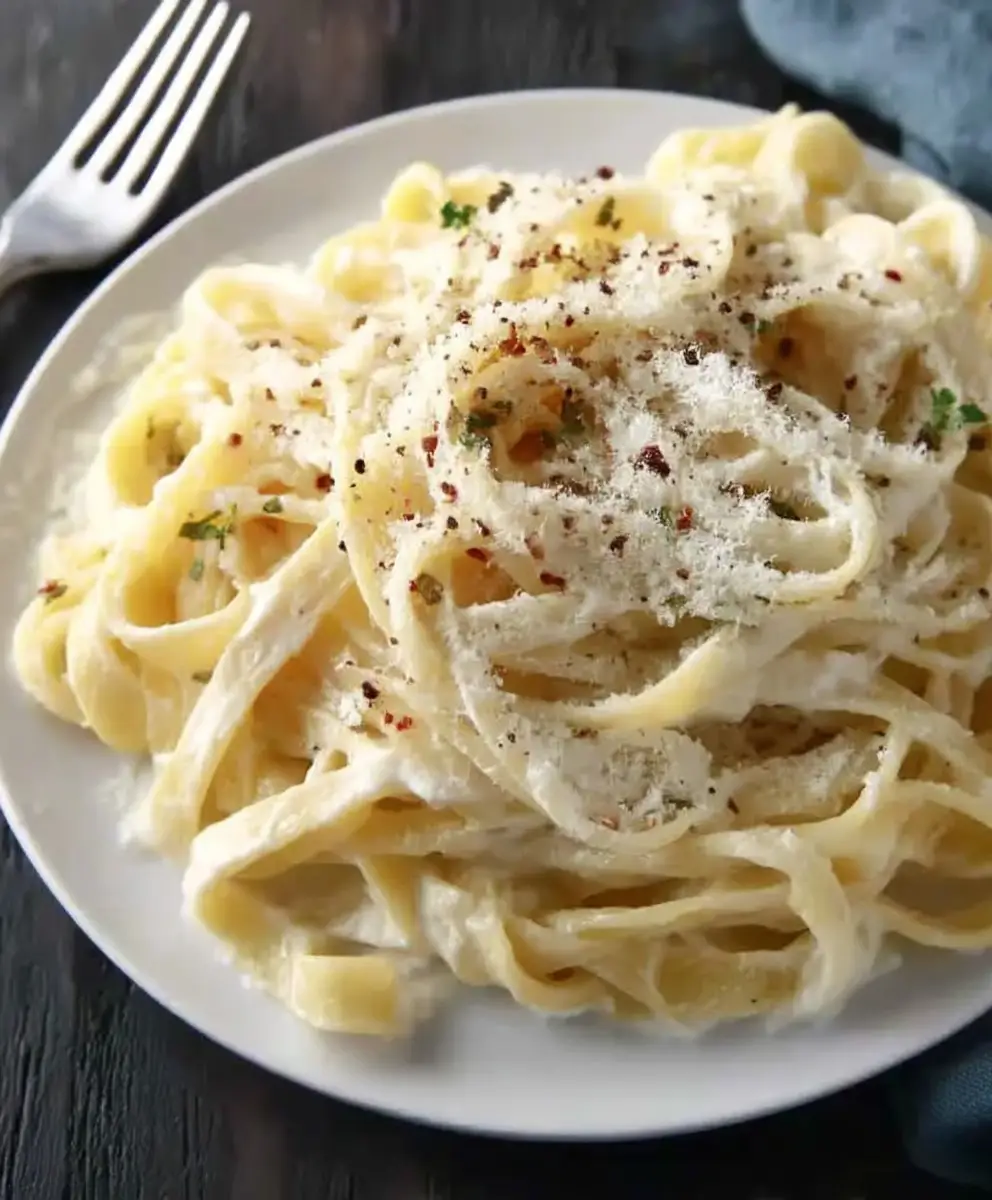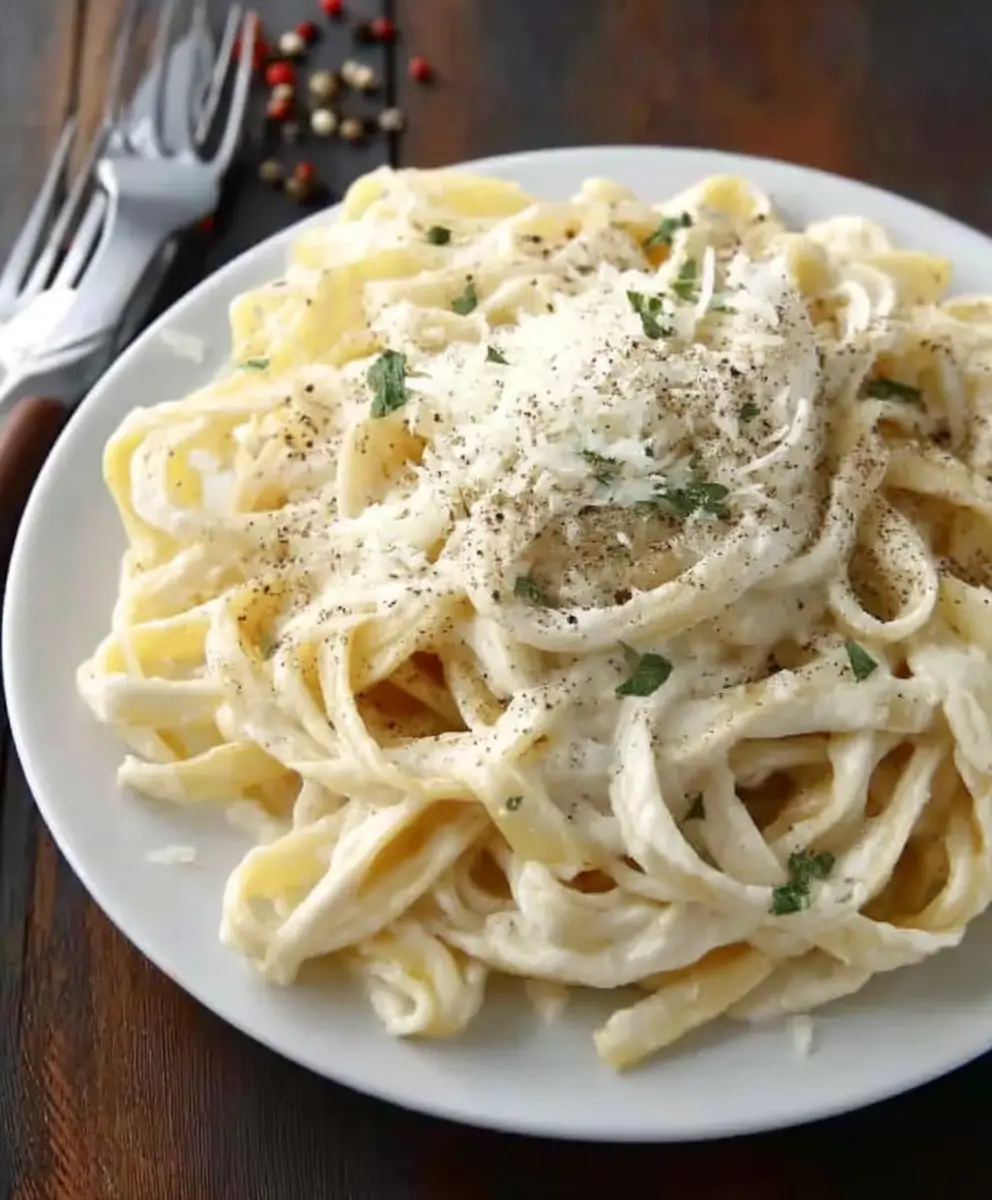Homemade Alfredo Sauce: the very words conjure up images of creamy, decadent pasta dishes, don’t they? Forget the jarred stuff – we’re about to embark on a culinary adventure that will redefine your understanding of this classic Italian-American staple. Have you ever wondered why restaurant Alfredo never quite tastes the same when you try to recreate it at home? The secret, my friends, lies in the simplicity and quality of the ingredients, and the technique.
While often associated with Italy, the Alfredo sauce we know and love is actually an American adaptation of a dish created in Rome. Alfredo di Lelio, an Italian restaurateur, invented “fettuccine al burro” (fettuccine with butter) in the early 20th century to tempt his pregnant wife’s appetite. This simple dish of butter, Parmesan cheese, and pasta gained international fame after being discovered by American tourists. Over time, the recipe evolved, often incorporating cream, resulting in the richer, more decadent homemade Alfredo sauce we enjoy today.
But why is Alfredo so universally adored? It’s the luxurious texture, the rich, cheesy flavor, and the sheer comfort it provides. It’s a dish that feels both elegant and approachable, perfect for a weeknight dinner or a special occasion. Plus, when you make it from scratch, you control the ingredients, ensuring a fresh and flavorful experience that far surpasses anything you can buy pre-made. So, are you ready to ditch the jar and discover the magic of real, authentic-tasting Alfredo? Let’s get cooking!
Ingredients:
- 1 cup (2 sticks) unsalted butter, cut into cubes
- 1 pint (2 cups) heavy cream
- 1 ½ cups freshly grated Parmesan cheese, plus more for serving
- ¼ teaspoon freshly grated nutmeg
- ½ teaspoon salt, or more to taste
- ¼ teaspoon black pepper, or more to taste
- 2 cloves garlic, minced (optional, but highly recommended!)
- 1/4 cup reserved pasta water (optional, for thinning)
Preparing the Alfredo Sauce:
- Melt the Butter: In a large, heavy-bottomed saucepan, melt the butter over medium-low heat. It’s crucial to use a heavy-bottomed pan to prevent the sauce from scorching. Keep a close eye on it; you want the butter to melt completely but not brown. Browning the butter will change the flavor profile, and we’re aiming for that classic, creamy Alfredo taste.
- Add the Garlic (Optional): If you’re using garlic, add the minced garlic to the melted butter and cook for about 30 seconds, or until fragrant. Be careful not to burn the garlic, as burnt garlic will make the sauce bitter. The garlic adds a subtle depth of flavor that complements the richness of the cheese and cream.
- Pour in the Heavy Cream: Gradually pour in the heavy cream, stirring constantly with a whisk. The key here is to incorporate the cream slowly to prevent it from separating. Continue whisking until the cream is heated through and starts to simmer gently. Don’t let it boil vigorously, as this can also cause separation.
- Simmer the Cream: Reduce the heat to low and let the cream simmer gently for about 5-7 minutes, stirring occasionally. This allows the cream to thicken slightly, which will help the sauce cling to the pasta. You should notice a slight change in the consistency as it simmers.
- Incorporate the Parmesan Cheese: Remove the saucepan from the heat. This is important! Adding the cheese while the sauce is still on the heat can cause it to clump. Gradually add the grated Parmesan cheese, about ½ cup at a time, whisking constantly until the cheese is completely melted and smooth. Make sure there are no lumps of cheese remaining. The quality of the Parmesan cheese is crucial here. Use freshly grated Parmesan from a block, not the pre-shredded kind, as it melts much better and has a superior flavor.
- Season the Sauce: Add the nutmeg, salt, and pepper. Stir well to combine. Taste the sauce and adjust the seasoning as needed. Remember that Parmesan cheese is already salty, so you may not need to add much additional salt. The nutmeg adds a subtle warmth and complexity to the flavor.
- Adjust Consistency (Optional): If the sauce is too thick, you can thin it out with a little reserved pasta water. Add a tablespoon or two at a time, whisking until you reach your desired consistency. The pasta water contains starch, which will help the sauce emulsify and cling to the pasta.
Serving the Alfredo Sauce:
- Cook the Pasta: While the sauce is simmering, cook your favorite pasta according to the package directions. I recommend using fettuccine, as its wide, flat shape is perfect for capturing the creamy sauce. However, other pasta shapes like linguine, spaghetti, or even penne will also work well.
- Reserve Pasta Water: Before draining the pasta, reserve about ½ cup of the pasta water. This starchy water is a valuable tool for adjusting the consistency of the sauce and helping it cling to the pasta.
- Drain the Pasta: Drain the pasta thoroughly. You don’t want any excess water diluting the sauce.
- Combine Pasta and Sauce: Immediately add the drained pasta to the saucepan with the Alfredo sauce. Toss well to coat the pasta evenly with the sauce. Make sure every strand of pasta is glistening with the creamy goodness.
- Serve Immediately: Serve the Alfredo pasta immediately, garnished with extra grated Parmesan cheese and a sprinkle of black pepper. Alfredo sauce is best served fresh, as it can thicken as it cools.
Tips and Variations:
- Use High-Quality Ingredients: The key to a truly delicious Alfredo sauce is using high-quality ingredients. Freshly grated Parmesan cheese and good-quality heavy cream will make a world of difference.
- Don’t Overcook the Sauce: Overcooking the sauce can cause it to separate and become greasy. Keep the heat low and simmer gently.
- Adjust the Thickness: If the sauce is too thick, thin it out with a little pasta water or milk. If it’s too thin, simmer it for a few more minutes to allow it to thicken.
- Add Protein: For a heartier meal, add cooked chicken, shrimp, or scallops to the Alfredo pasta. These proteins pair perfectly with the creamy sauce.
- Add Vegetables: You can also add vegetables like broccoli, peas, or mushrooms to the Alfredo pasta. Sauté the vegetables before adding them to the sauce.
- Spice it Up: For a spicy kick, add a pinch of red pepper flakes to the sauce.
- Lemon Zest: A little lemon zest can brighten up the flavor of the Alfredo sauce. Add a teaspoon of lemon zest to the sauce along with the Parmesan cheese.
- White Wine: For a richer flavor, add a splash of dry white wine to the sauce along with the heavy cream. Sauvignon Blanc or Pinot Grigio would work well.
- Make it Vegetarian: Ensure the Parmesan cheese you are using is vegetarian-friendly, as some Parmesan cheeses use animal rennet.
- Storage: Leftover Alfredo sauce can be stored in an airtight container in the refrigerator for up to 3 days. Reheat gently over low heat, adding a little milk or cream to thin it out if necessary. The sauce may separate slightly upon reheating, but it will still be delicious.
- Freezing: While you *can* freeze Alfredo sauce, I don’t recommend it. The texture can change significantly upon thawing, becoming grainy and separated. If you must freeze it, do so in an airtight container and thaw it slowly in the refrigerator. Be prepared to whisk it vigorously and possibly add a little cream to restore its smoothness.
Troubleshooting:
- Sauce is too thick: Add a tablespoon or two of reserved pasta water or milk at a time, whisking until you reach the desired consistency.
- Sauce is too thin: Simmer the sauce for a few more minutes over low heat, stirring constantly, until it thickens.
- Sauce is grainy: This is usually caused by adding the Parmesan cheese while the sauce is too hot. Remove the sauce from the heat before adding the cheese and whisk constantly until it is melted and smooth. If the sauce is already grainy, try whisking in a tablespoon of heavy cream or butter.
- Sauce is separating: This can happen if the sauce is overcooked or if the cream is not fresh. Try whisking in a tablespoon of cold butter or heavy cream. If that doesn’t work, you may need to start over.
- Sauce is bland: Add more salt, pepper, or Parmesan cheese to taste. A pinch of red pepper flakes or a squeeze of lemon juice can also brighten up the flavor.
Enjoy your homemade Alfredo sauce! It’s a simple yet elegant dish that’s sure to impress.

Conclusion:
This Homemade Alfredo Sauce recipe is more than just a collection of ingredients; it’s a gateway to creamy, dreamy pasta nights and a testament to the fact that sometimes, the simplest things are truly the best. I urge you to give it a try because the difference between jarred sauce and this freshly made version is simply astounding. The richness, the depth of flavor, and the sheer satisfaction of knowing you created something so delicious from scratch? It’s an experience you won’t want to miss.
Think of the possibilities! While it’s absolutely divine tossed with fettuccine, don’t limit yourself. This Alfredo sauce is incredibly versatile. For a heartier meal, try adding grilled chicken or shrimp. Roasted vegetables like broccoli, asparagus, or mushrooms also pair beautifully, adding a touch of earthy sweetness to complement the creamy sauce. If you’re feeling adventurous, consider stirring in some sun-dried tomatoes or a pinch of red pepper flakes for a little kick.
For a truly decadent experience, consider using freshly grated Parmesan Reggiano. The quality of the cheese makes a huge difference in the final flavor. And don’t be afraid to experiment with different types of pasta! While fettuccine is the classic choice, linguine, penne, or even tortellini would work wonderfully. You could even use it as a base for a creamy white pizza sauce – the possibilities are endless!
Beyond pasta, this Homemade Alfredo Sauce can elevate other dishes as well. Imagine drizzling it over roasted potatoes, using it as a dip for crusty bread, or even incorporating it into a creamy gratin. It’s a fantastic way to add a touch of luxury to everyday meals.
I know that making your own sauce from scratch might seem intimidating at first, but trust me, this recipe is incredibly easy to follow. With just a few simple ingredients and a little bit of patience, you can create a sauce that rivals anything you’d find in a restaurant. And the best part? You can customize it to your own taste preferences. Want a thicker sauce? Add a little more Parmesan cheese. Prefer a more garlicky flavor? Simply increase the amount of garlic.
I’m so confident that you’ll love this recipe that I can’t wait to hear about your experiences. Once you’ve tried it, please share your photos and comments! Let me know what variations you tried, what you paired it with, and how it turned out. Did you add any special ingredients? Did you make any adjustments to the recipe? Your feedback is invaluable, and it helps me to continue creating recipes that you’ll love.
So, gather your ingredients, put on some music, and get ready to create a truly unforgettable meal. I promise you, this Homemade Alfredo Sauce will become a staple in your kitchen. Happy cooking! I am sure you will enjoy this recipe as much as I do.
Homemade Alfredo Sauce: The Creamiest, Easiest Recipe
Rich, creamy homemade Alfredo sauce perfect for pasta. Made with butter, heavy cream, and Parmesan cheese, this classic sauce is easy and impressive.
Ingredients
Instructions
Recipe Notes
- Use high-quality ingredients for the best flavor.
- Don’t overcook the sauce, as it can separate.
- Adjust the thickness with pasta water or milk.
- Add protein (chicken, shrimp, scallops) or vegetables (broccoli, peas, mushrooms) for a heartier meal.
- Spice it up with red pepper flakes.
- A little lemon zest can brighten up the flavor.
- For a richer flavor, add a splash of dry white wine.
- Ensure the Parmesan cheese you are using is vegetarian-friendly, as some Parmesan cheeses use animal rennet.
- Leftover Alfredo sauce can be stored in an airtight container in the refrigerator for up to 3 days. Reheat gently over low heat, adding a little milk or cream to thin it out if necessary.
- While you *can* freeze Alfredo sauce, I don’t recommend it. The texture can change significantly upon thawing, becoming grainy and separated. If you must freeze it, do so in an airtight container and thaw it slowly in the refrigerator. Be prepared to whisk it vigorously and possibly add a little cream to restore its smoothness.




